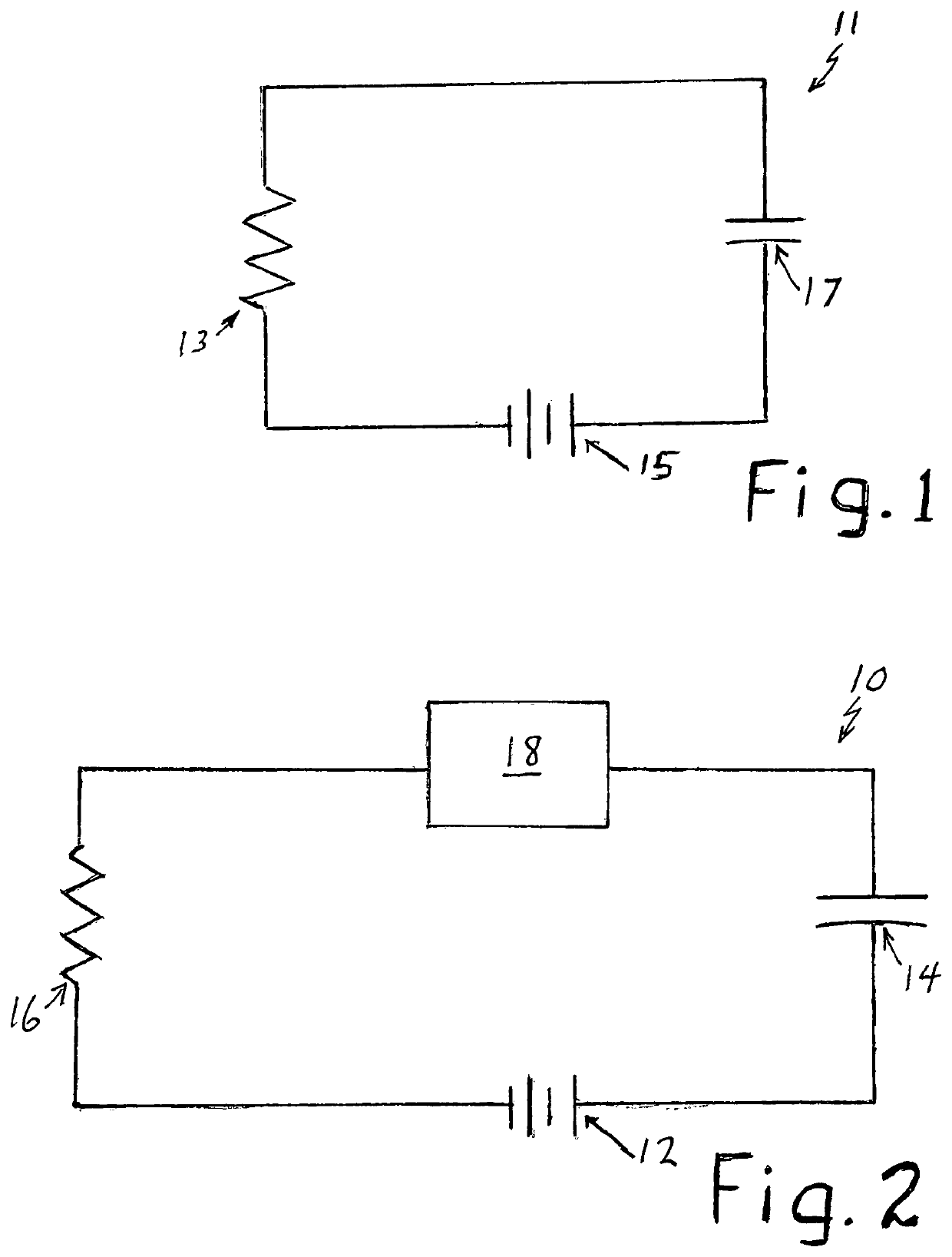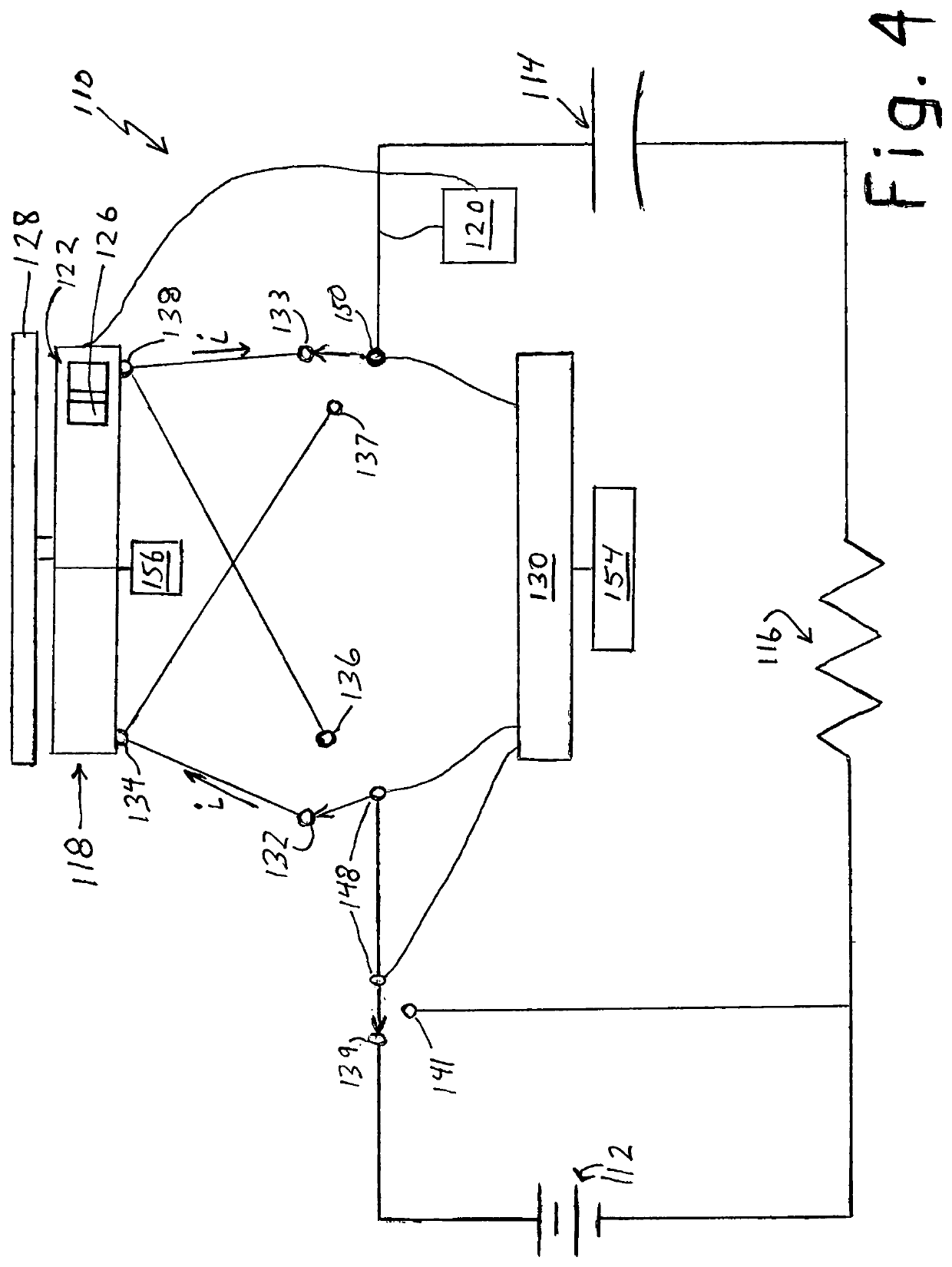System for capturing electrical circuit energy otherwise lost to circuit resistance heat
- Summary
- Abstract
- Description
- Claims
- Application Information
AI Technical Summary
Benefits of technology
Problems solved by technology
Method used
Image
Examples
Embodiment Construction
[0047]Referring to the drawings, FIG. 1 shows a conventional capacitor circuit 11. The resistance of the circuit 11 is equivalent to and represented by the resistor 13. The power source 15 supplies a constant DC voltage Va to the capacitor 17 that is in series with the resistor 13. The current IA is time varying and it deposits a charge Qa in the capacitor 17. The total energy output from the power source 15 is VaQa. The energy stored in the capacitor 17 is ½VaQa i.e. only half the energy output VaQa of the power source 15 in the charging process. The other half of the total energy output VaQa is dissipated as heat in the resistor 13.
[0048]FIG. 2 shows the system of the invention in its first embodiment 10. Embodiment 10 includes an electrical power source 12, an energy storage device 14 which is preferably a capacitor 14 and a resistor 16 (which may simply be representative of the circuit resistance), as in FIGS. 1 and 2. Thus, FIG. 2 essentially shows a charging circuit such as sh...
PUM
 Login to View More
Login to View More Abstract
Description
Claims
Application Information
 Login to View More
Login to View More - R&D Engineer
- R&D Manager
- IP Professional
- Industry Leading Data Capabilities
- Powerful AI technology
- Patent DNA Extraction
Browse by: Latest US Patents, China's latest patents, Technical Efficacy Thesaurus, Application Domain, Technology Topic, Popular Technical Reports.
© 2024 PatSnap. All rights reserved.Legal|Privacy policy|Modern Slavery Act Transparency Statement|Sitemap|About US| Contact US: help@patsnap.com










